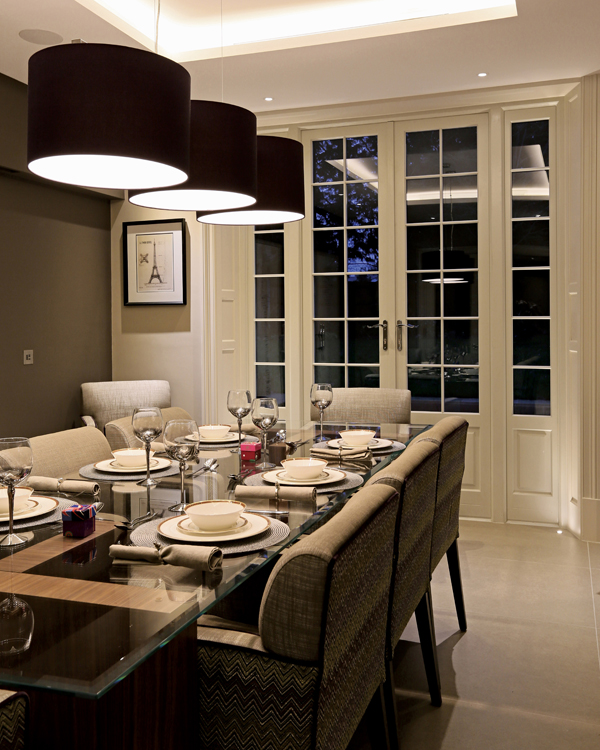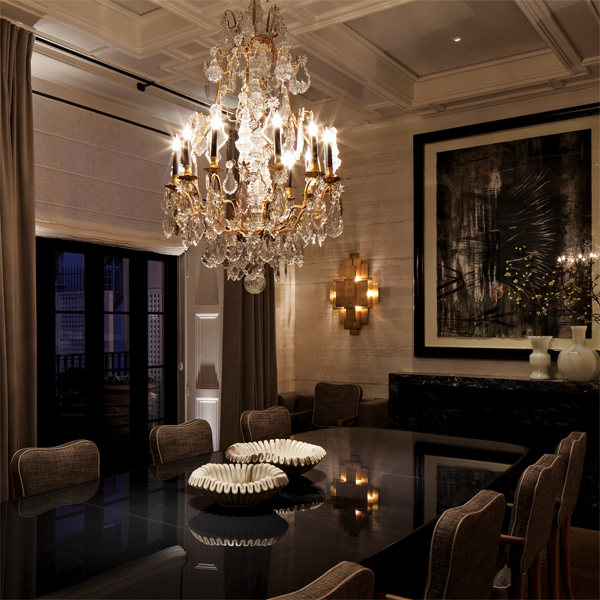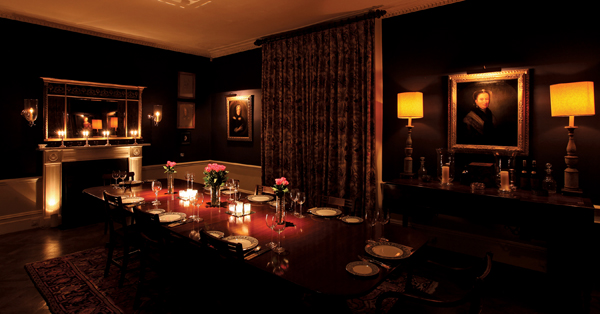Sally Storey, creative director of John Cullen Lighting, advises that the essential ingredient that contributes to a successful dining room, after food and company, is the mood and this is best controlled by lighting.
The key to good dining room lighting is to focus light on to the centre of the table, on to the silverware or the flowers, but never directly over the diners’ heads. Low glare downlights with narrow beam lamps are ideal for this and will give the centre of the table a soft atmospheric glow. When dining this helps create an intimate feel to the space and draws the diners in.
Consider the features in your dining room and light these. Light your art with downlights or picture lights as this will provide a soft reflected light in the room and create a focus. Think about framing any windows and provide an element of uplight to the window frames or shutter boxes. Reflect light off your curtains so that the material can be seen at night.
Avoid decorative lights in a dining room that are non-dimmable and cold LED light sources. If you have a chandelier over your dining table, this will provide ambient light within the space, but this should be dimmed and downlights added to provide the focus and create intimacy.
Finally, always control lights on different circuits ie the light on the centre of a table, separate to decorative lights and from any feature lighting. By having a variety of effects it is easier to change the mood and create the ideal atmosphere.



